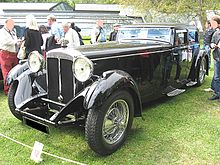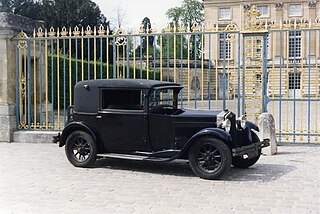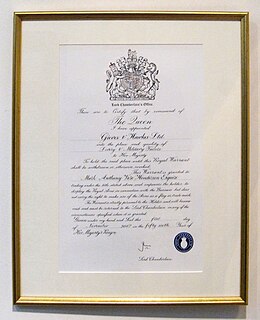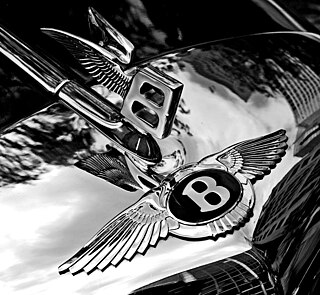
Bentley Motors Limited is a British manufacturer and marketer of luxury cars and SUVs—and a subsidiary of the Volkswagen Group since 1998.

Coupe de ville — also known as town car, sedanca de ville or coupé de ville — is a car body style produced from 1908 to 1939 with an external or open-topped driver's position and an enclosed compartment for passengers. Although the different terms may have once had specific meanings for certain car manufacturers or countries, the terms are often used interchangeably.

A coachbuilder or body-maker manufactures bodies for passenger-carrying vehicles. Coachwork is the body of an automobile, bus, horse-drawn carriage, or railroad passenger car. The word "coach" was derived from the Hungarian town of Kocs.

The Bentley Mark VI is an automobile from Bentley which was produced from 1946 to 1952.

The Bentley R Type is the second series of post-war Bentley automobiles, replacing the Mark VI. Essentially a larger-boot version of the Mk VI, the R type is regarded by some as a stop-gap before the introduction of the S series cars in 1955. As with its predecessor, a standard body was available as well as coachbuilt versions by firms including H. J. Mulliner & Co., Park Ward, Harold Radford, Freestone and Webb, Carrosserie Worblaufen and others.

The Silver Wraith was the first post-war Rolls-Royce. It was made from 1946 to 1958 as only a chassis at Rolls-Royce's former Merlin engine plant, their Crewe factory, alongside the shorter Bentley Mark VI. The Bentley too was available as a chassis for coachbuilders but also for the first time could be bought with a Rolls-Royce built standard steel body.

The Phantom IV is a British automobile produced by Rolls-Royce. Only eighteen were made between 1950 and 1956. They were only built for buyers Rolls-Royce considered worthy of the distinction: the British Royal Family and heads of state. Sixteen are currently known to still exist in museums as well as in public and private collections.

The Rolls-Royce Phantom III was the final large pre-war Rolls-Royce. Introduced in 1936, it replaced the Phantom II and it was the only V12 Rolls-Royce until the 1998 introduction of the Silver Seraph. 727 V12 Phantom III chassis were constructed from 1936 to 1939, and many have survived. Although chassis production ceased in 1939, cars were still being bodied and delivered in 1940 and 1941. The very last car, though the rolling chassis was completed in 1941, was not delivered with a body to its owner until 1947. The Phantom III was the last car that Henry Royce worked on - he died, aged 70, a year into the Phantom III's development.

The regular Bentley 6½ Litre and the high-performance Bentley Speed Six were rolling chassis in production from 1926 to 1930. The Speed Six, introduced in 1928, would become the most successful racing Bentley. Two Bentley Speed Sixes became known as the Blue Train Bentleys after their owner Woolf Barnato's involvement in the Blue Train Races of 1930.

The Bentley 3½ Litre was presented to the public in September 1933, shortly after the death of Henry Royce, and was the first new Bentley model following Rolls-Royce's acquisition of the Bentley brand in 1931.
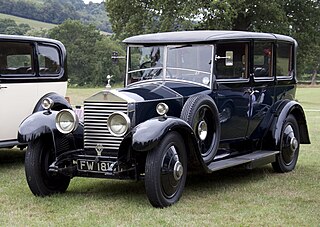
Park Ward was a British coachbuilder founded in 1919 which operated from Willesden in North London. In the 1930s backed by Rolls-Royce Limited it made technical advances which enabled the building of all-steel bodies to Rolls-Royce's high standards. Bought by Rolls-Royce in 1939 it disappeared into the Rolls-Royce group in 1961 as a part of Mulliner-Park Ward.
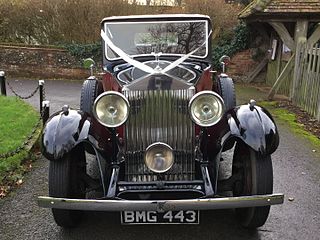
The Rolls-Royce 20/25 was the second of Rolls-Royce Ltd's pre-war entry level models. Built between 1929 and 1936, it was tremendously popular, becoming the most successful selling inter-war Rolls-Royce. Its success enabled Rolls-Royce to survive the economic difficulties of the Great Depression years and remain one of world’s great brands. A total of 3,827 20/25s were produced, of which over 70% are still on the road today.

Hooper & Co. was a British coachbuilding company based in Westminster London. From 1805 to 1959 it was a notably successful maker, to special order, of luxury carriages both horse-drawn and motor-powered.

The Rolls-Royce Twenty built between 1922 and 1929 was Rolls-Royce's "small car" for the 1920s and was produced alongside the 40/50 Silver Ghost and the successor to the 40/50, the Phantom. It was intended to appeal to owner drivers but many were sold to customers with chauffeurs.

James Young Limited was a top class British coachbuilding business in London Road, Bromley, England.

John Polwhele Blatchley was a London-born car designer known for his work with J Gurney Nutting & Co Limited and Rolls-Royce Limited. He began his career as designer with Nutting in 1935, moving up to Chief Designer before leaving in 1940 to join Rolls-Royce. There he served as a draughtsman (1940–43), stylist in the car division (1943–55), and chief styling engineer (1955–69).

Freestone and Webb were English coachbuilders who made bodies for Rolls-Royce and Bentley motor cars but also built bodies on other chassis including Alfa Romeo, Packard, and Mercedes-Benz.

The Carlton Carriage Company was a highly respected London coachbuilder that provided bespoke coachwork for some of the finest car makers of the 1920 and 30's. They are best known for their drophead coupes which are archetypal designs of the British Jazz Era.

Carrosserie Vanvooren was a French Coachbuilder based in the north-western Paris suburb of Courbevoie. The company concentrated on producing car bodies for luxury cars, being closely associated, during the 1930s, with the products of Hispano-Suiza, Bugatti, Rolls-Royce and Bentley.

